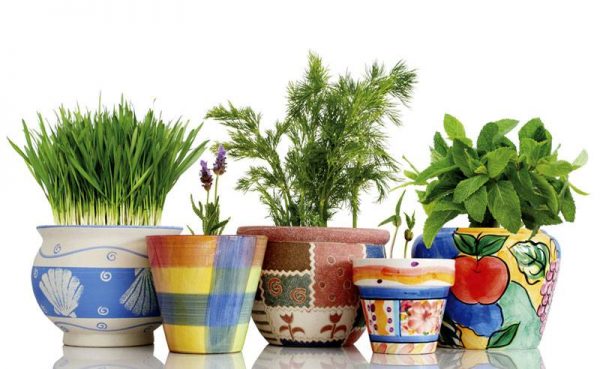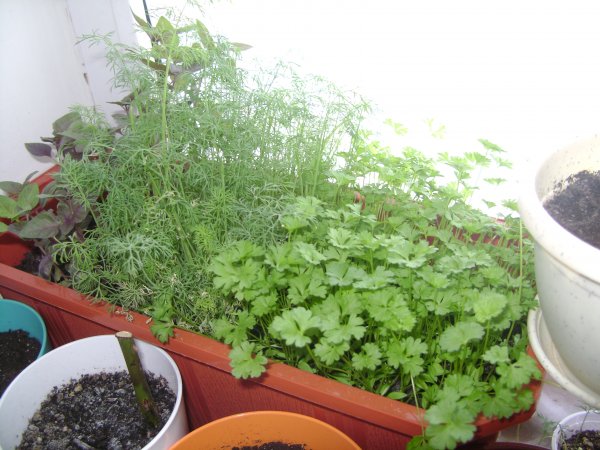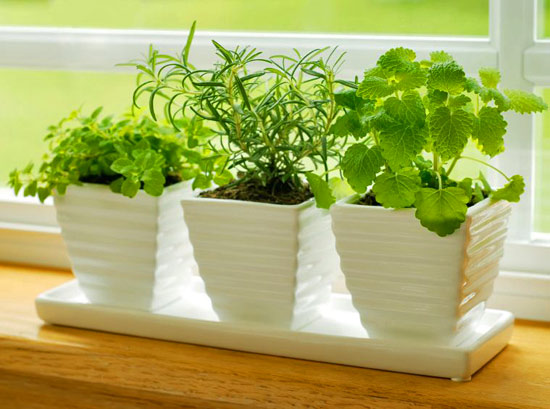Parsley on the windowsill: growing from seeds and care
Content
What to do for forcing land
It all starts with forcing land for future house beds. Any pot found in a house with a small number of holes for the release of excess water after watering and its further not stagnation can be suitable as a bed for parsley or dill. If this container was previously used for other plants, it should be treated with a weak solution of potassium permanganate.
You can buy the soil or substrate for parsley or dill at a specialty store, or you can make your own. For this we need 20% of humus, 20% of sod land, 60% of the soil from the backyard. All are well mixed until smooth and the box is filled with this mixture.
Professional Tips Video
An informative video, in which you can hear the advice of a professional on growing greenery at home.
What varieties of parsley are suitable
Be sure to choose early ripe varieties of parsley or other greens (for example, dill), which will yield a harvest a couple of weeks earlier than other types. The most common varieties are:
- Morning freshness;
- Gloria;
- Aster;
- Vorozheya;
- Green pearls;
- Grandma's bed;
- Beads, etc.
Growing from seeds
Often, not many gardeners have a good idea of how to grow parsley on a windowsill. And many take care of the garden at home, as well as in the open field. But the method of planting and caring for the house is slightly different and you should familiarize yourself with some points of how dill or parsley grows on the windowsill.
Growing parsley on a windowsill has its poles and minuses. Such a plant requires proper and fruitful care, but already the first greens from parsley or dill bushes can be obtained in a month and a half and harvest greens throughout the next year.
Parsley on a windowsill from seeds is grown in this way:
- parsley or dill seeds should be dipped in water a day before planting for better germination (water must be changed daily and it should not be cold);
- a few hours before sowing, the seeds are treated with a weak solution of potassium permanganate;
- there must be outlets in the box for future greenery so that the water does not stagnate;
- sowing seeds of parsley or the same dill is required to be planted no deeper than half a centimeter and sprinkling them a little with earth from above;
- before germination, seedlings should be kept in a dark place and watered regularly (watering every other day is recommended);
- already risen and green seedlings of parsley or dill should be placed on the windowsill closer to the sun;
- young shoots should be thinned out for the density and splendor of the greenery (the distance between the bushes is 3 cm);
- in 2 months the first crop can be harvested.
It is necessary not to forget about the constant care that parsley requires to itself. The plant, especially in summer, requires abundant watering and moderate in winter. Do not forget about the full daylight hours, because in winter it is short and an additional 3-4 hours are required under the light lamps, which should be located at a height of 60 cm from the box itself. Maintaining an optimal temperature of about + 20C is very important, and she should also avoid strong drafts.
Growing root vegetables
The method is convenient in that you do not need to use seeds and germinate them. Planting parsley at home with root vegetables is not at all difficult, as it might seem at first glance. Before the first frosts, it is worth digging up a couple of root crops from the garden in the country, or you can buy them in the store.
Immediately before planting, the boxes are disinfected with a weak solution of potassium permanganate. The proportions of the future land for a pot or box at home are slightly different than for sowing parsley with seeds. The proportions of the soil look like this 70% of the land from the garden, 20% of humus and 10% of sod land with the addition of phosphorus-containing fertilizers and lime.
After the box is completely filled with this mixture, you need to moisten the ground well and plant the roots at a distance of 2 cm from each other. Before planting, root crops are treated with a strong solution of potassium permanganate to prevent diseases in the future harvest. It is not necessary to fill the tops of the root crops strongly, it is important that a small part of the root crop is at the top, then lightly water the soil.
As soon as the parsley at home starts growing, simple care begins for it:
- the box with root vegetables should be removed to a cool place;
- a box of parsley should sometimes be turned with different sides to the light so that the bushes grow evenly;
- on days without good sunlight (cloudy), it is better to turn on additional illumination with a lamp;
- watering is necessarily frequent and good;
- the air temperature near the seedlings should not be more than + 20C;
- in a month, the first greens will be ready to be harvested;
- if the plant has not acquired a massive and large appearance, it must be fed with fertilizers (containing phosphorus).
Root crops can be planted several times over the entire winter period. And in early spring, it is worth taking them out to the balcony for hardening. Watering involves regularity, drying out or waterlogging in pots with herbs is undesirable. Water for irrigation should only be at room temperature. Timely loosening of the soil is also required. Top dressing of parsley grown at home with seeds is made with liquid organic fertilizers twice a month.
Video "Instructions for greenery lovers"
Video instruction for those who wish to eat greens all year round.




